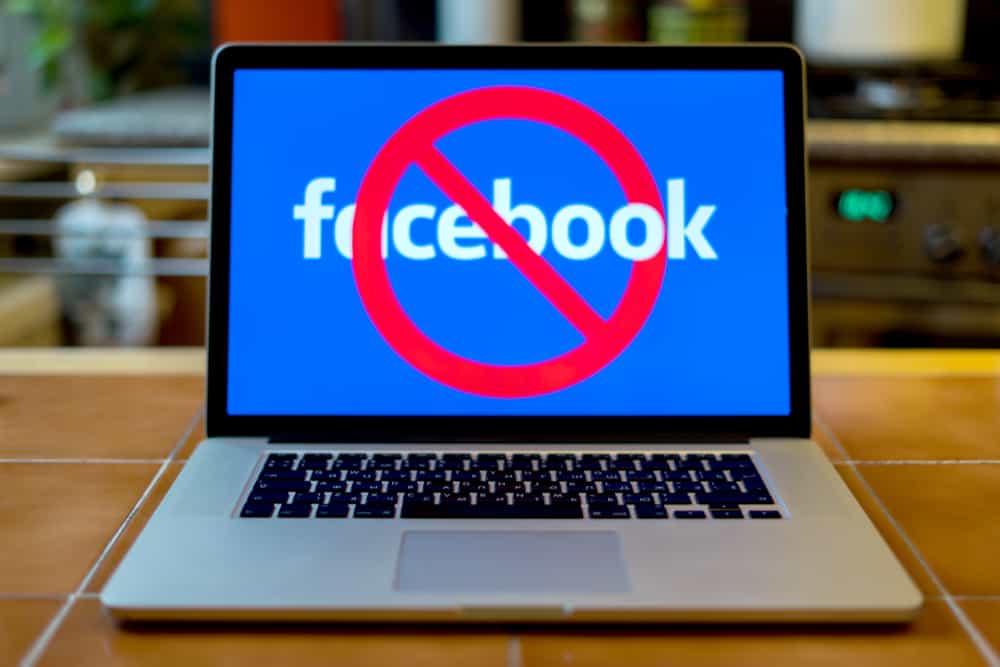This article will cover everything you need to know about a temporary block on Facebook.
Why Does Facebook Temporarily Block an Account?
A temporary block is placed on an account typically when suspicious activity is observed on the account. The block is usually for the protection of the account and gets lifted once Facebook confirms that the account’s owner is still in charge. For instance, linking your Facebook account with an unrecognized third-party app could result in a temporary block. Activities like that are deemed “suspicious,” where the account owner must verify their identity as a safety precaution. Asides from this, Facebook can temporarily block your account for impersonation or using a fake name/account, linking your accounts with bots and automated software, sending too many messages (spamming) or friend requests, and increasing post frequency suddenly. Other activities that violate community standards that could result in a block include spam advertising, requesting authentication codes and recoveries too often, and joining several groups within a short period. However, it does not end there, as your account can be placed under lock for assessing your account from an unfamiliar location. Either in an unfamiliar location or from an unknown device, Facebook has the power to lock your account till you confirm that it’s actually you. All of these are typically security measures to ensure the privacy and safety of Facebook users.
What Can I Do To Lift a Temporary Block on Facebook?
To get your account unlocked from a temporary block, there are a few ways to go about it. These include reporting a login issue, filling out the “security checks preventing login” form and verifying your identity with Facebook.
Reporting a Login Issue
If your account gets temporarily locked by Facebook, you can request help using the “Report a login issue” feature. You’ll find it at the end of Facebook settings, where you can describe what’s keeping you out of your account and how you’ve tried to resolve it. Ensure you provide an active or linked email address to get follow-ups. You can also add a screenshot of your error message for better assistance. You’ll get a response typically within 24 hours, but if there’s high traffic, you’ll get one within ten days.
Filling Out a “Security Checks Preventing Login” Form
Generally, Facebook sends you a security code when it locks you out of your account to proceed with logging in. This code is sent to the Facebook-linked email or phone number, and once you input it correctly, your account will unlock automatically. However, if you do not receive a code from Facebook, you need to reach Facebook’s support team and fill out the “security checks preventing login” form. When you get this form, you have to explain precisely the problem you’re facing and put your email for follow-ups. Also, ensure to state that you did not receive any security code from Facebook to unlock your account. Finally, you can add a screenshot to help explain the problem better.
Verifying Your Identity With Facebook
In the contact and help sections of Facebook, you can also verify your identity by filling out a form on Facebook. With this form, you’ll get to pass the verification check proving to Facebook that you are the owner of the account. In this form, you’ll be required to attach an identification with your photo, like your driver’s license or passport. You’ll also have to add your mobile number or linked email on Facebook. At the end of this form, Facebook will tell you they can only store your identification means for a year which you can change to thirty days through the identity confirmation settings. So, submit the form and wait for a follow-up from Facebook.
Conclusion
Facebook can lock your account for 24 or 48 hours and extend it to 30 days, depending on the severe offense or suspicious activity. A temporary block is not a permanent ban caused by posting harmful content to users; hence with enough appeal, you’ll be able to get your account back.
